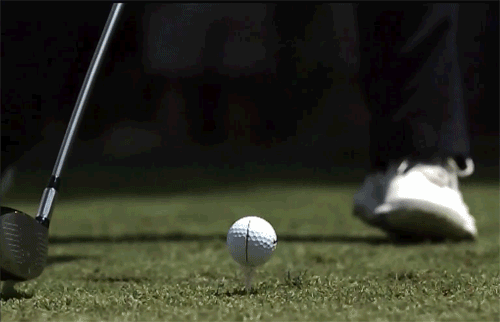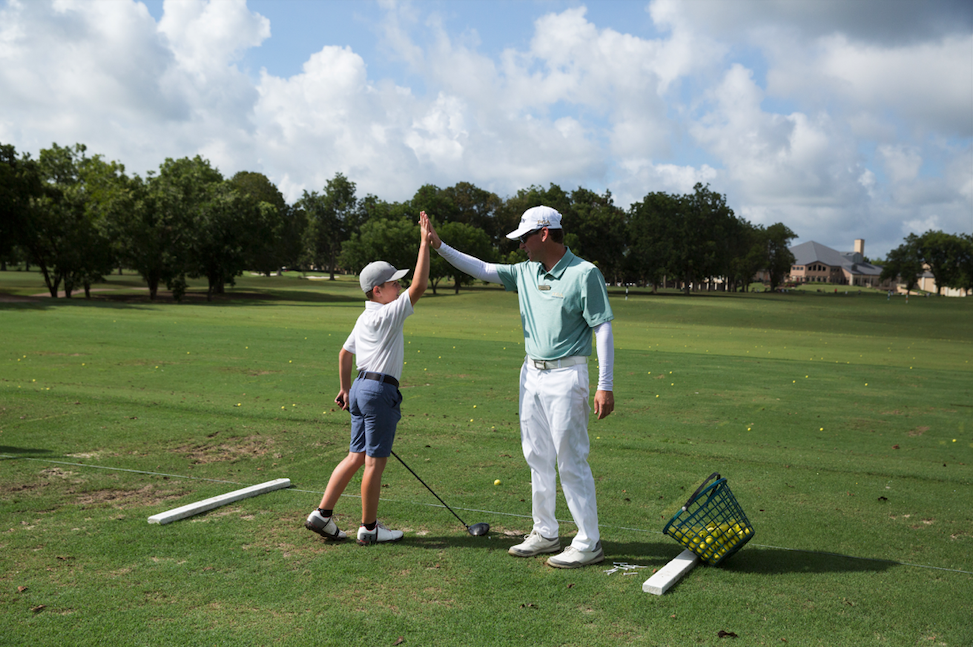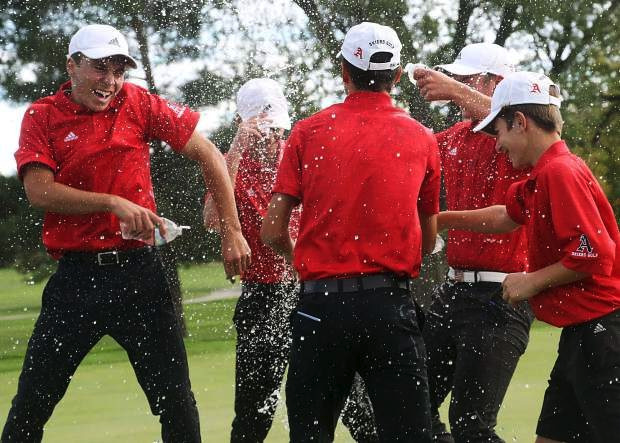
April 17th, 2019
The crew at EPEC understands how difficult it can be to select the right set of clubs for your new golfer. Check out their guide on types of clubs to consider based on your child's skill level.

The hardest part about supporting your young golfer is sometimes deciding what clubs to put in their bag.
Young golfers can be grouped into 3 skill levels:
Beginner - Has little to no golf experience, but excited to learn. This group needs to find success quickly to avoid being discouraged. The best way to describe success for this group is that they are able to get the ball airborne easily. A Beginner's golf bag should have a Driver, Hybrid, 7 Iron, 9 Iron, and Putter.
Intermediate - Has some experience and plays recreationally. As a young golfer’s skill increases, clubs that deliver more specific distances are required. An intermediate player's golf bag should have a Driver, Hybrid, 5 Iron, 7 Iron, 8 Iron, 9 Iron, Pitching Wedge, and Putter.
Advanced - Plays frequently and sometimes competitively. This group needs to have clubs to perform the full spectrum of yardages. Their skill level has grown to the point where clubs should complement the types of shots they are trying to hit. An advanced player's golf bag should have a Driver, Fairway Wood, Hybrid, 6 Iron, 7 Iron, 8 Iron, 9 Iron, Pitching Wedge, Sand Wedge and Putter.
Interested in learning more about EPEC junior golf clubs? Head over to the store to find out more!
April 17th, 2019

Is your junior golfer ready to take the next step in their game?
Offered at some of the finest courses in the country, Competitive Edge Overnight Camps are designed to improve the most motivated junior golfers. These camps are taught by PGA professionals who are widely regarded as some of the country’s most successful junior golf instructors, many of whom are former top golfers themselves.
Competitive Edge overnight camps concentrate on instruction designed to take your junior golfers' game to the next level. Special emphasis on mental conditioning, course management, and the short game are just some of the various areas of focus for our camps. Golfers will practice stroke play, match play, and other competitions to gain valuable course experience and improve their mental and physical game.
Tee Off at the site of the 2020 Ryder Cup!
Parents are invited to experience one of the most desirable golf locations in the world with their junior golfer. Set foot on the same greens that will host golf's best at the 2020 Ryder Cup. While juniors receive professional level instruction, parents will have the day off to enjoy special golf rates at any of the courses during their stay. Explore the resort property and stay in deluxe accommodations at the Inn On Woodlake.
Experience Hilton Head
Recognized as One of Golf Digest’s “Best Places to Play,” competitive junior golfers will not only receive professional instruction but also the best technology that golf has to offer. Instructors utilize various tools including TrackMan Pro, SAM PuttLab, K-Vest and V1 Pro Software to build an individual plan of improvement for each student, and focus on areas that each individual needs to improve their golf game.

Interested in learning about more of the Competitive Edge Overnight Camps that are offered this Summer? Check out the Overnight Camps section to view other locations and learn more!
April 2nd, 2019
Director of Instructor at TPC Las Vegas Matt Henderson shares his putting technique and how to control the pre-shot routine. Check out more of Matt's blog on his website and be sure to register for his PGA Junior Golf Camps!
Putting Contains no large athletic feat, nor does it require the modalities needed for the full the swing. That means that our average Club Champion can hypothetically putt just as well as a TOUR Champion. Quite often if left from any manipulative movements the stroke itself will look very much like the established setup position. For great putting…. take control over setup. Here are the steps that I look for in my instruction:
1. Shaft In-Line with Forearms
The importance of this cannot be overstated and that is why it is number one. A lot of amateurs grip the putter too much in fingers, essentially taking their full swing grip to the putting stroke. In full swing, we are assembling angles that enable us to create speed and get the ball in the air.... neither is needed to putt it well. Ditch the full swing grip and get it in more in the palms and in line with your forearms like the above picture. This is my only hang up on grip, feel free to cross hand, claw it or any other configuration that you can muster.
2. Ball to Toe
The arc that we wish the putter head to move on will be affected by how far away or close to the golf ball we stand. Too close and we can shape it in an out to in pattern, too far way and the path could be too far in to out. Without being properly fit for a putter my best suggestion would be to fall into TOUR average, which is 2 – 2 ¾ Putter head lengths away from the ball. With the average putter heads measuring 4” that puts our ball to toe measurement somewhere between eight to ten inches away from the center of the ball. Start at two putter head lengths and work slightly away from it if it feels to close.
3. Ball position/Stance Width
- Ball position is tricky, because it is interwoven with stance width and can not only influence the angle of attack of the putter head, but can influence aim as well. The truth is that ball position can depend on what aim bias the individual has. Aim bias is really a reflection of our vision and each of us is unique. This can be modified with Putter head shapes, the addition or subtraction of sight lines, and of course ball position.
To establish ball position, start with the ball one revolution ahead of center and then ask a friend to tell you where the face is pointed in relation to the aim-line. If the face is aimed left move the ball further back, if it is aimed right move the ball further up in the stance.
- Stance width and ball position need to be mentioned in the same breath. If the stance widens our head and sternum move further behind the ball…which changes the effective ball position. Which if you read above…changes the effective aim. Pick a stance width when the ball position is established. Stance with should be a constant.
4. Forearms In
No awkward elbow positions…The elbows simply need to be neutral to posture. If they are not we are simply negating all the work of trying to get shaft in line with forearms earlier. To find your neutral position stand completely upright and let your arms hang naturally, look down and that what your elbows should look like on the putter.
5. Body Check
The last check is to make sure that our lines are not jumbled. The lines that I am mainly concerned with are the line we intend to start the ball on (True Aim Line) and the shoulder line. Most of the time if the two are not parallel players tend to have path and aim issues. Set the club face to the Aim line and establish shoulders to club face
March 13th, 2019

PGA Junior Golf Camps is pleased to welcome Todd Heugly as a new camp director this year. Todd is a member of the Utah PGA Section, founder of The Wasatch Golf Academy, and the Head PGA Professional at Crane Field Golf Course.
After a great day on the lesson tee, I decided to go play a few holes, after all I had an hour of daylight left. With the early summer sun setting to my back I tee'd up my ball and hit a great drive right down the middle of the fairway. An onlooker said, "Great shot! Golf has to be easier from the fairway." I thanked him put my clubs over my shoulder and started walking down the fairway towards my ball. As I was walking I thought to myself, "Golf is easier from the fairway, I should adopt that approach to my daily life as well." I remember that moment like it was yesterday. After 40 years my life had complete clarity and a purpose. Not only improve my students golf games, but let them know how this can carry over into their day to day activities. That moment created my life's motto and I have lived my life by it ever since.
My students have embraced my motto "Play golf and live life from the fairway." They began putting an emphasis on precision and accuracy over distance. Distance is only an asset if it is accurate and can be controlled. They started shooting lower scores and enjoying the game more. That joy and confidence carried over into their day to day lives and they began living from the fairway.
They began eliminating what we called the rough.
- Self doubt
- Toxic people
- Procrastination
- Unnecessary arguments
- Too much social media
- Not exercising
- Unhealthy food
- Arrogance
- and more
There are so many parallels between the game of golf and life that we can learn about life on the course and golf off the course. I want you to "Play golf and live life from the fairway."
To learn more about Todd Heugly, check out The Wasatch Golf Academy and don’t forget to register for his PGA Junior Golf Camp dates!
March 8th, 2019

John O’Sullivan is a best selling author, professional speaker, and founder of the Changing the Game Project. John’s insight and solutions to the issues that youth sports are currently facing makes him a leader in the industry. Read on to learn more about John and listen to his podcast with Dr. Martin Toms.
Every week, we have some amazing conversations with some of the leading voices in sport throughout the world, This week was no different. We had the opportunity to interview Dr. Martin Toms, a Sport Sociologist and Ethnographer from the university of Birmingham in the UK. Dr. Toms has heavily influenced our work through his philosophy "You Coach a Child, not a Sport."
CLICK HERE TO LISTEN TO OUR TALK WITH DR. MARTIN TOMS
Among our talking points we spoke about the relative age effect, the futility of early talent identification, and how much culture impacts sport performance:
Dr. Toms: "I have spent much of my career and many of my Twitter posts (as well as previous blog posts) arguing that sports (including National Governing Bodies and coaches) seem to spend a huge amount of time and effort (not to mention money) focusing on sports performance and ability/talent by using Physiological and Psychological constructs to improve the performance of those already playing sport. Whilst I have no problem with the use of Sports Science here, such a one dimensional approach often forgets the ‘person’ and their upbringing and cultural history – which clearly can and does have an effect on their sporting choices. They are people not just bodies after all.”
Dr. Toms: “People making decisions about young people and talent are in reality making arbitrary and subjective decisions on where these people are ‘now’. So whilst they may be elite at 14, there is little chance of them being elite as an adult. So why is there such pressure to identify and push people rather than allow them to play sport and develop themselves.”
February 27th, 2019
Justin Saragueta is the Director of Golf and PGA Junior Golf Camps at The Saticoy Club in Somis, California.
In today’s tech oriented society, it’s harder than ever to shift our kid’s attention away from screens. For many of today’s youth, the fun of outdoor activities is often overshadowed by sophisticated cell phones, computers and iPads. Are we finding the right activities for our children to lure them away from the high tech world?
How can we incorporate the old adage of mind, body and soul into one activity? What can we use to entice our children with technology and the outdoors? My answer...golf, of course!
The benefits of the game of golf are endless. The mind is challenged constantly during a round of golf. How strong is the wind actually blowing? Do you lay up or just go for it? Is it a hard 6 iron or a soft 5? Did I add my score correctly or did I actually shoot a 38 not 39?
Then there are the times the soul is challenged and the true character of one’s self is revealed. Did I hit my ball on purpose? Will I call that penalty on myself? Will your child start treating his or her competitors with grace and respect in defeat as well as victory?
What about the body? How can we get our kids to move and work harder than their tech gadgets? On the golf course all our juniors walk. Some with electrical carts that help carry their bags but they are moving up and down gently rolling hills nonetheless. At times the kids will be out there for hours on end.
And then there is the social aspect of today’s tech world. Emojis seem to speak more than we do. We text, we don’t talk. By socializing our children in an environment which teaches respect, character and manners; we can encourage positive traits that will last a lifetime!
In my opinion, golf offers the best of both worlds. I have been blessed to be the Director of Golf at the Saticoy Club here in sunny Somis California. Knowing the importance of reaching children, we have incorporated the tech world within our instruction, camps and clinics. I allow my kids to get on and play with Trackman- a radar based system that tracks all aspects of ball flight, swing plan and swing path. We let our kids video themselves allowing the capability to draw smiley faces, lines and stars on each other while they are up on screen hitting shots. We download apps and send email recaps which allow our young students to map out and track their progress through their playing and instructional paths. The point being- it’s not always about the game but about getting kids to first and foremost just want to come to the course because it’s fun! Think outside the box. Stimulate our youth mentally, physically and emotionally. You will watch your child grow in ways that will make you proud while your child is simply just having a great time!
Sign up for PGA Junior Golf Camps at The Saticoy Club.
Justin Saragueta, PGA | Director of Golf | The Saticoy Club
February 26th, 2019

For junior golfers everywhere, golf camps are a great opportunity to receive world-class instruction, learn about the game and have fun with their friends. As many approach high school, decisions are made on what sports and activities to take part in. There are over 222,000 high school golfers that compete nationally each year. On top of that, there are opportunities for every high school golfer to play golf in college. Below highlights just a few reasons why every junior should play high school golf.
Team-Based Competition
Golf is widely thought of as an individual sport, and in many respects, this is true. However, high school golf provides a junior an opportunity to compete in a team atmosphere and create bonds with teammates and coaches. With the exception of PGA Junior Leagues, almost all junior and amateur golf are exclusively individual when it comes to competition. In high school, a junior is able to not only compete for themselves but their school as well.
Local, Regional, State and National Tournaments
As a high school golfer, you have the chance to play in local, regional, state, and even national events. Imagine playing locally and even on a national scale. In 2019, the NHSGA is hosting the High School Golf National Invitational in Orlando, Florida where 348 of the top high school golfers will compete for a national title. This event will be held on a yearly basis in conjunction with national junior golf organizations to help elevate high school golfers to the national stage, celebrating and recognizing their play.
Representation of school
Not just the football team at a high school can get all the love when it comes to school spirit or pride. High school golfers are playing for the name on their bag and the mascot on their shirt, giving a sense of belonging that is not felt in a typical junior event. Only 7% of high school golfers go onto play at any varsity level in college, so high school golf could be the only opportunity for some to represent their school.
Preparation for college golf
Every high school golfer can play golf in college. Whether you are looking to get an NCAA scholarship or play club golf with the National Collegiate Club Golf Association (NCCGA), high school golf will help you get prepared to play in college. Since most golfers cannot play varsity, the NCCGA provides a competitive playing opportunity for any boy or girl who does not compete on the varsity team at their college. Whether you shoot 65 or 125, all swings are welcome.
If you are interested in learning more about topics surrounding the high school golf, be sure to check out the NHSGA’s high school golf news.
Camps instructed by




